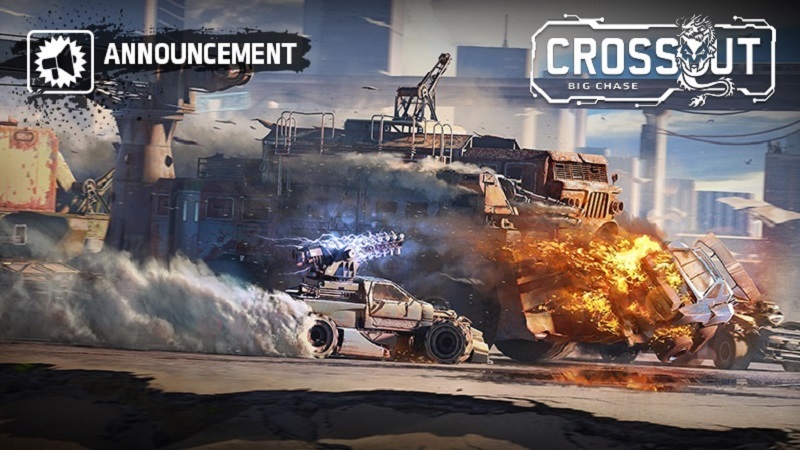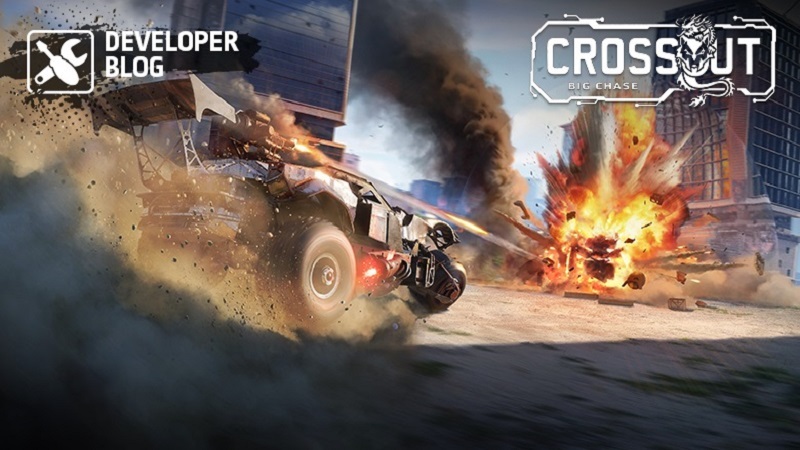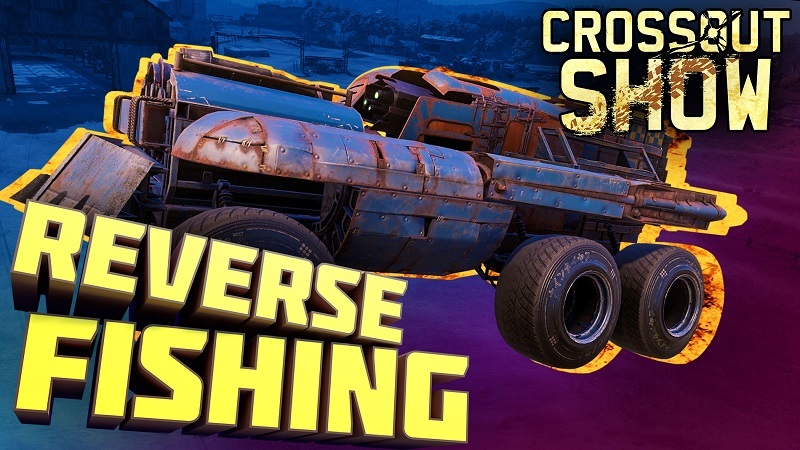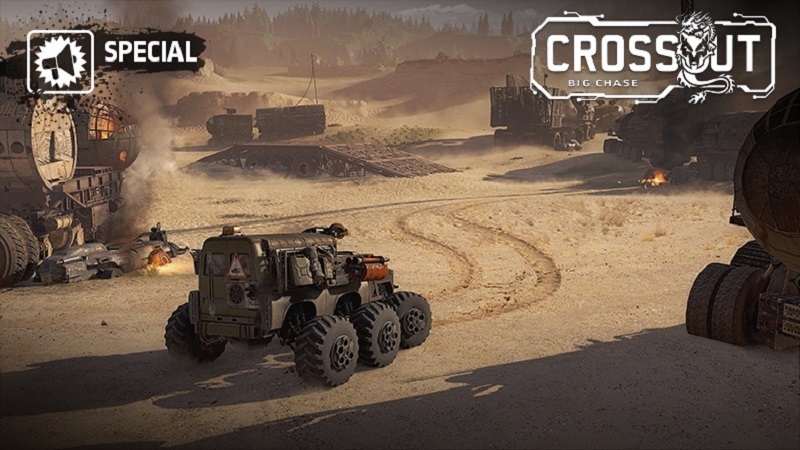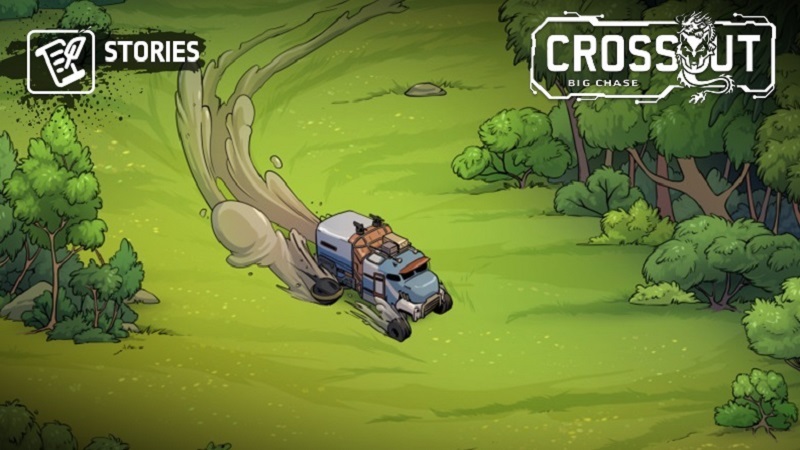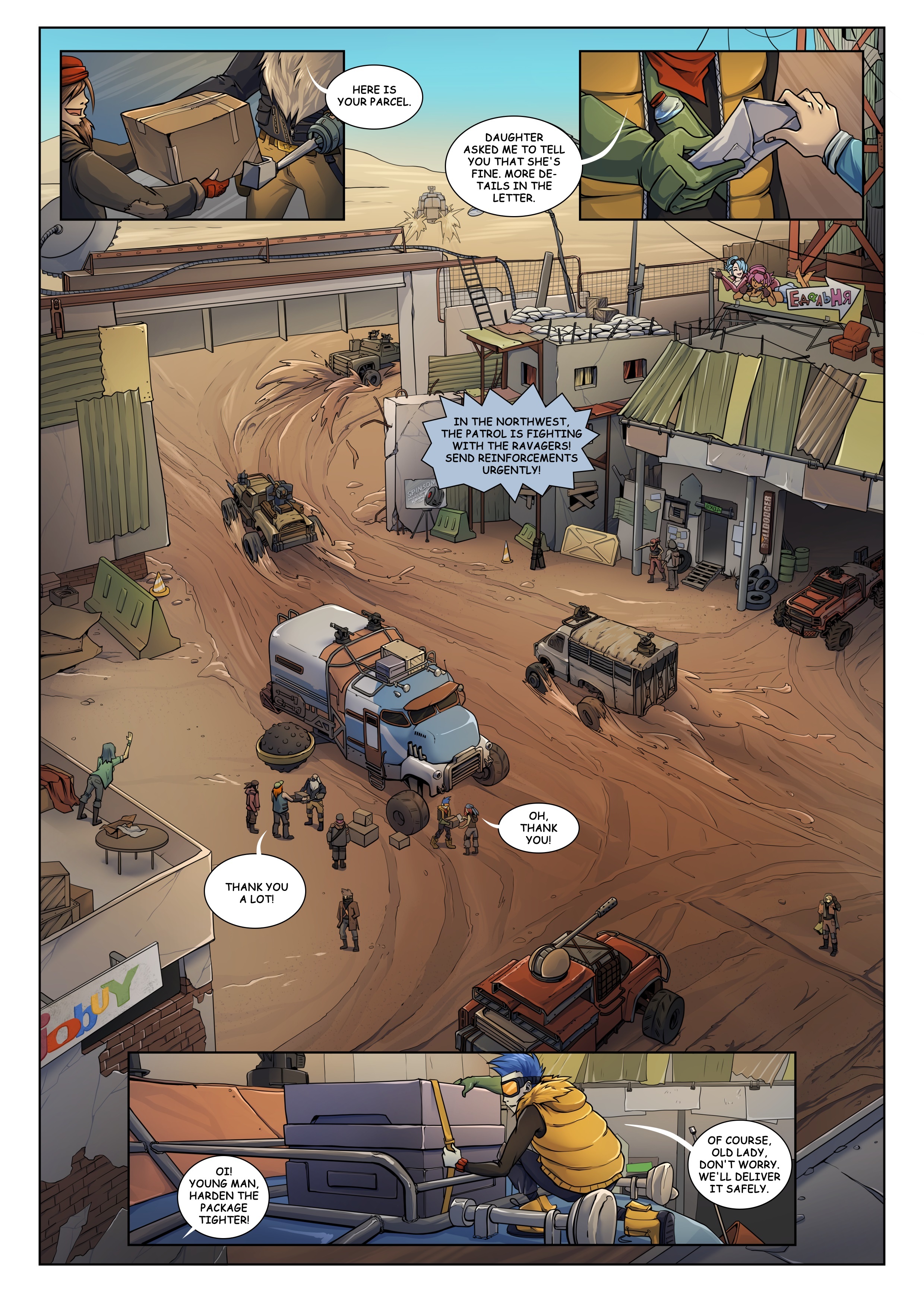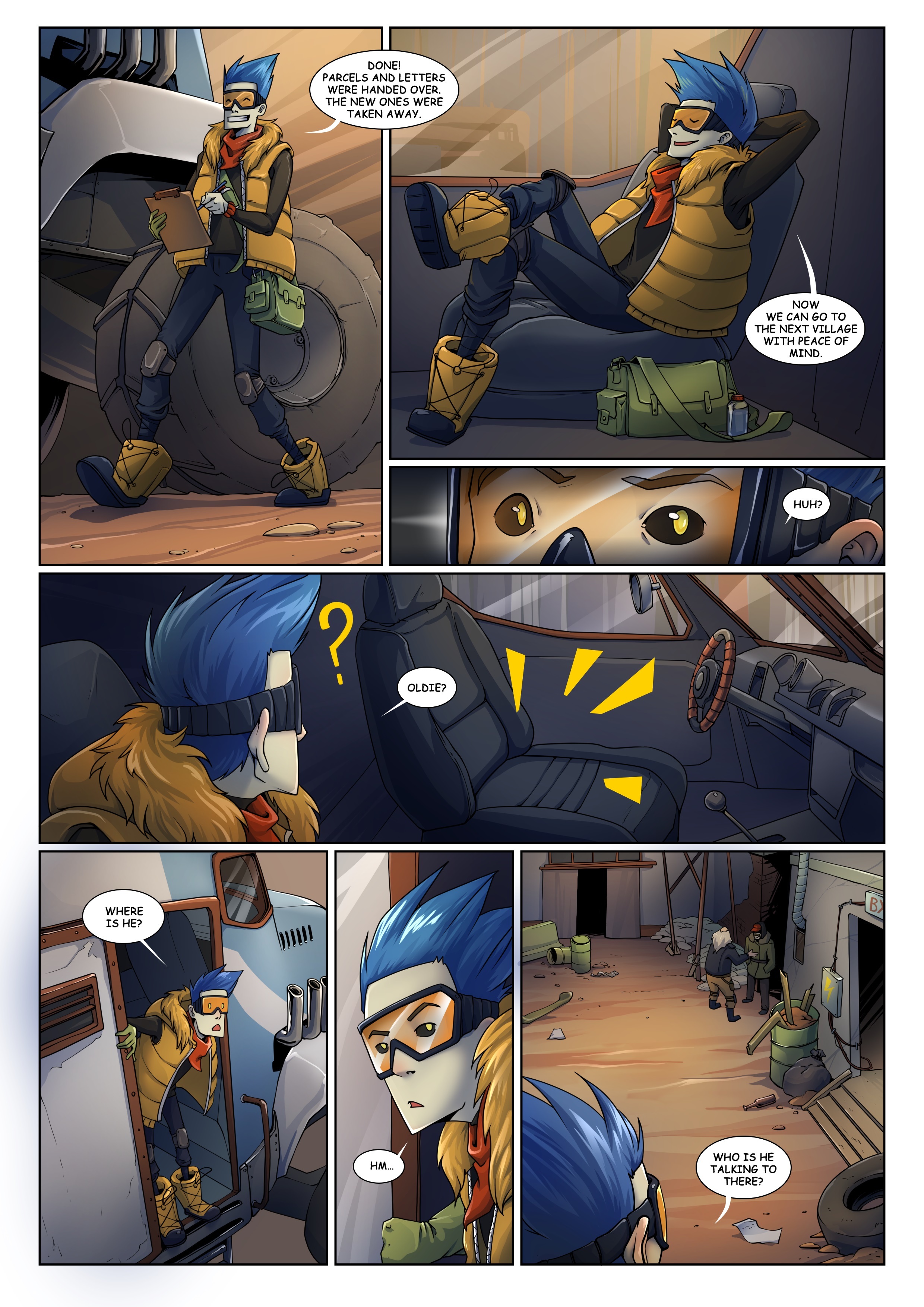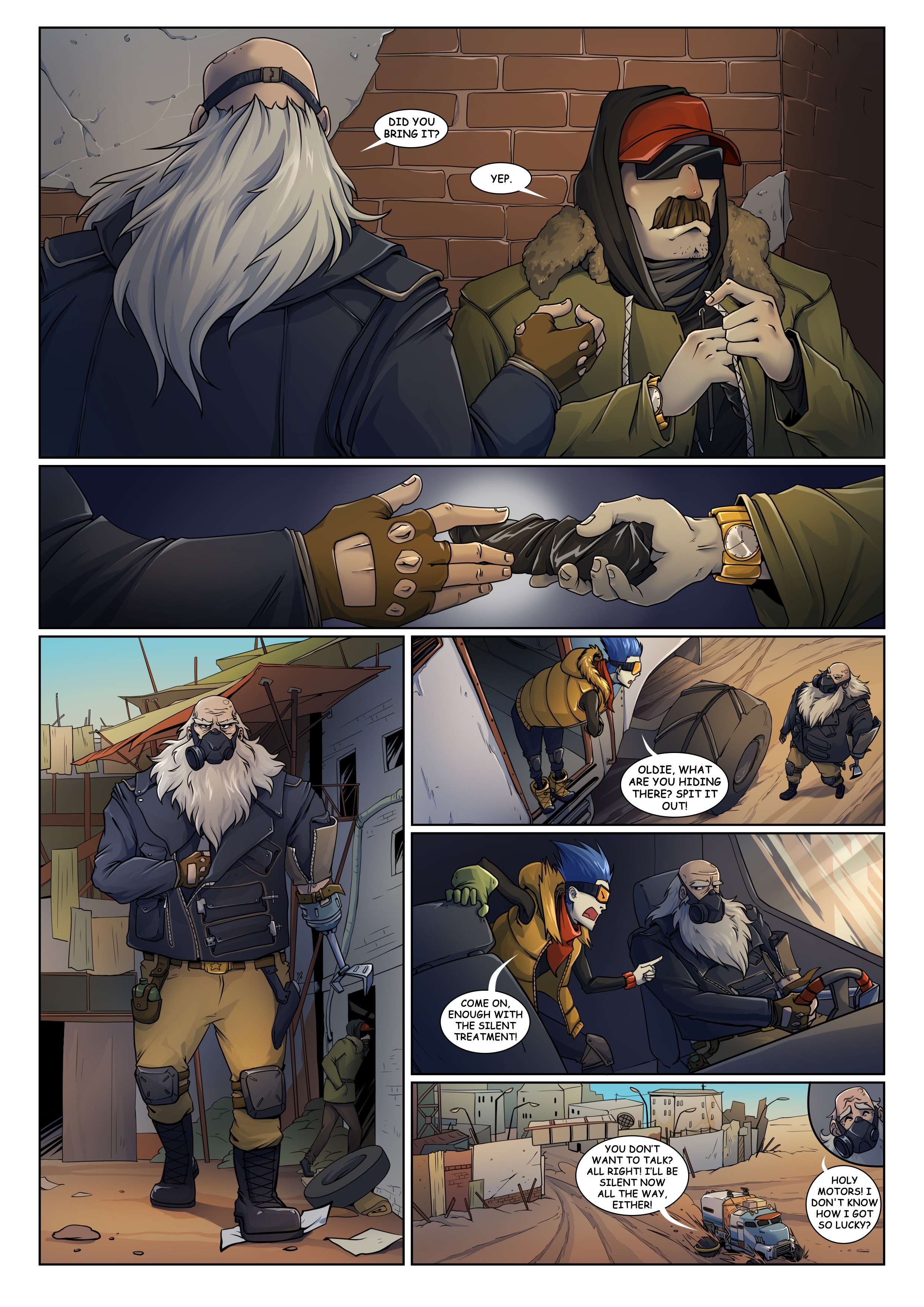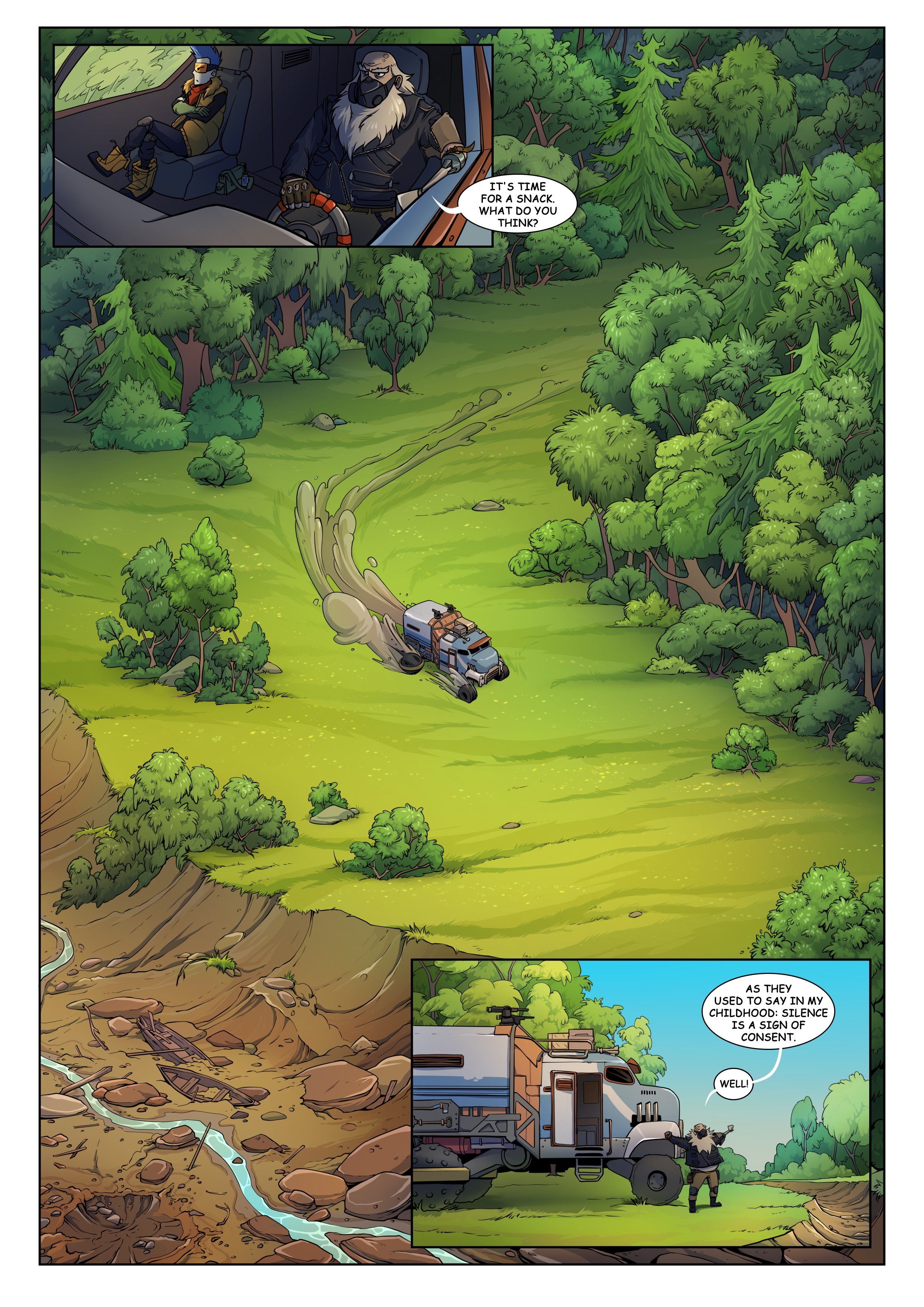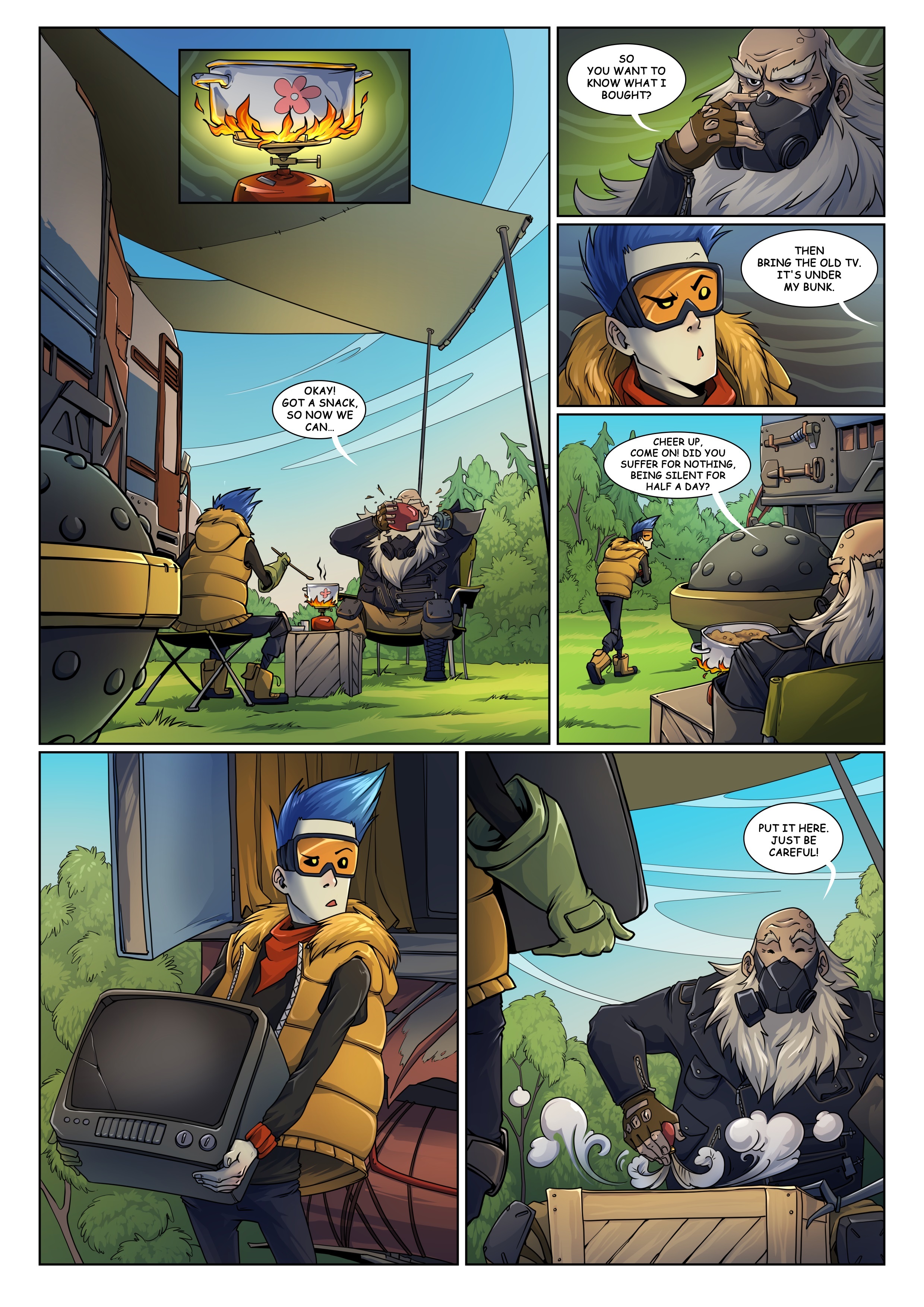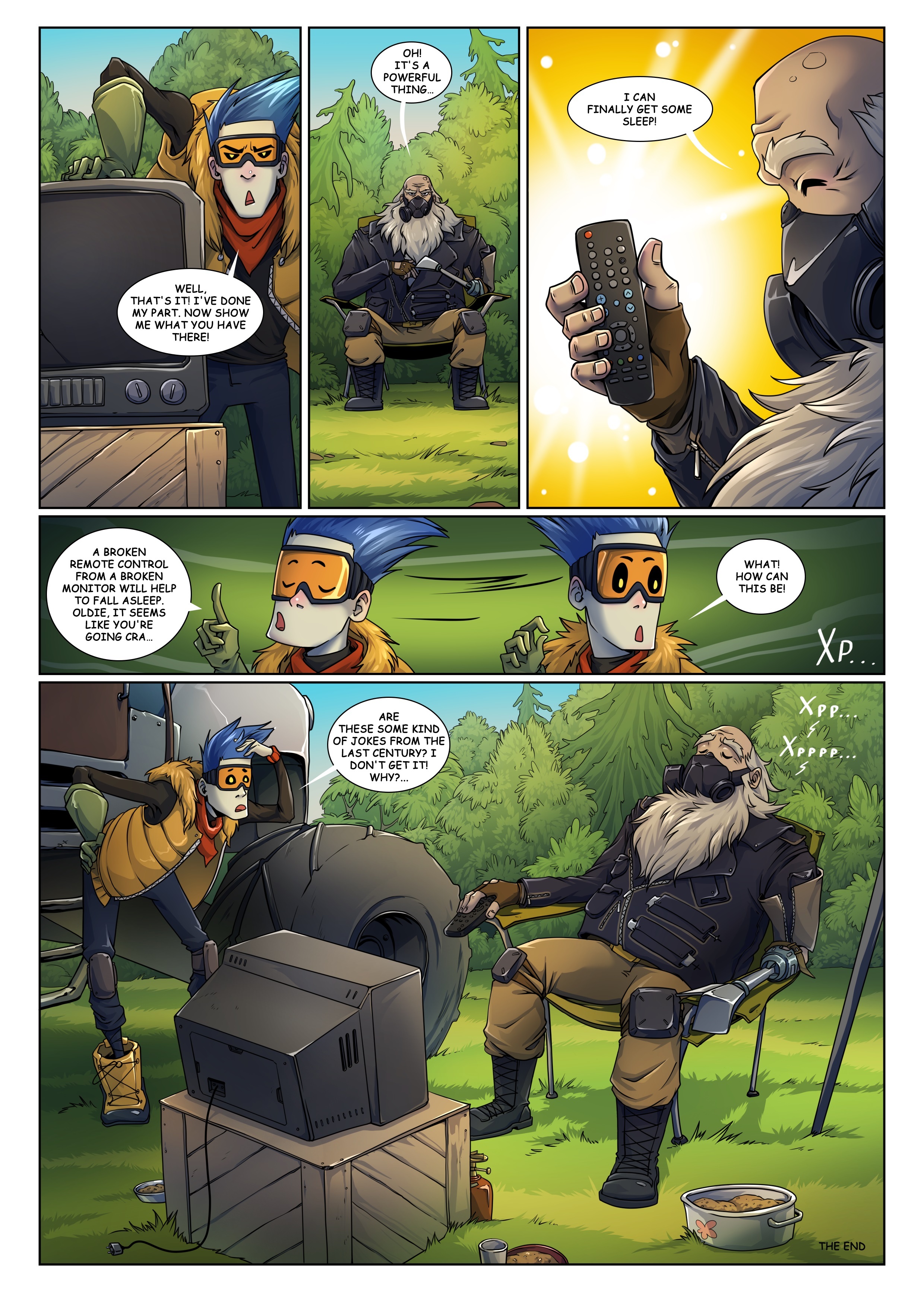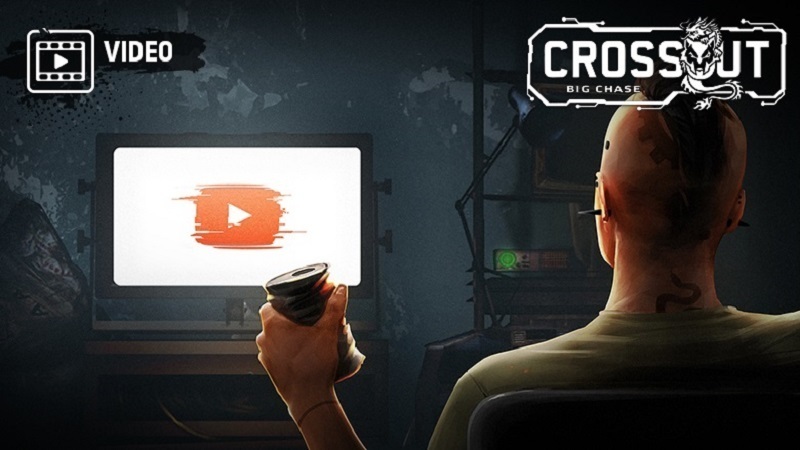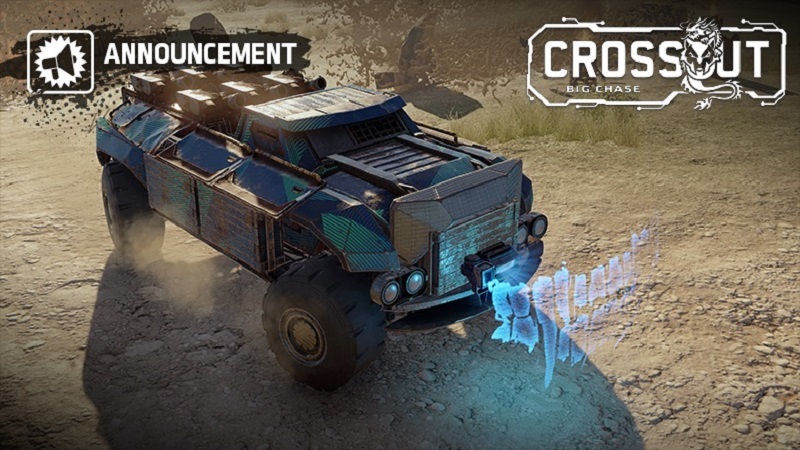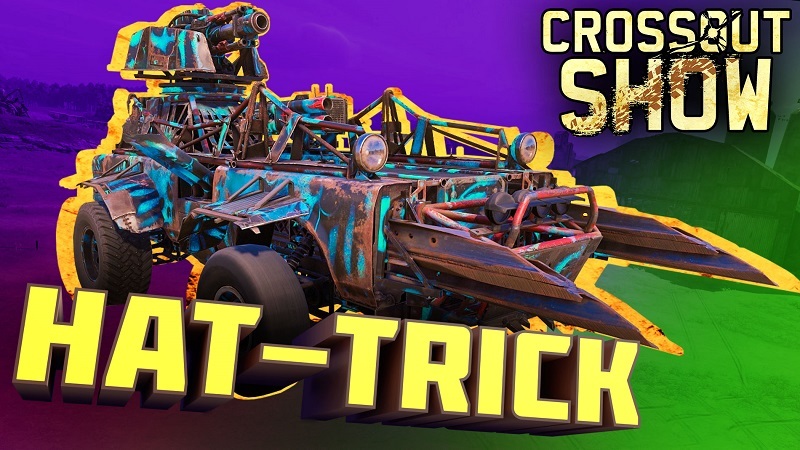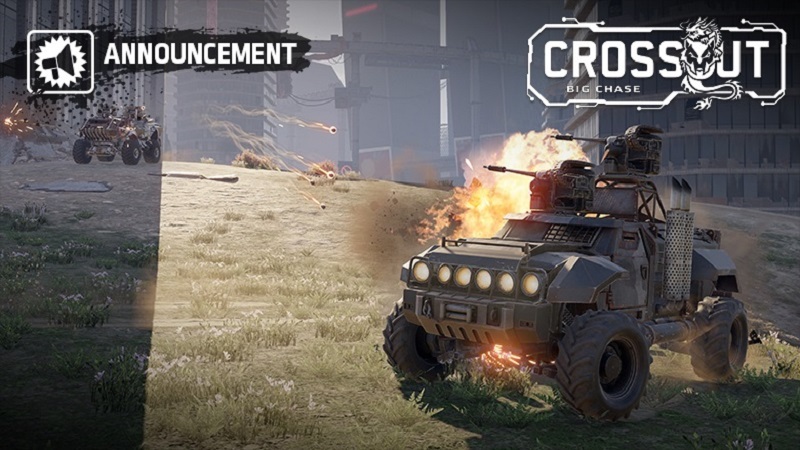
Crossout - XO_Team
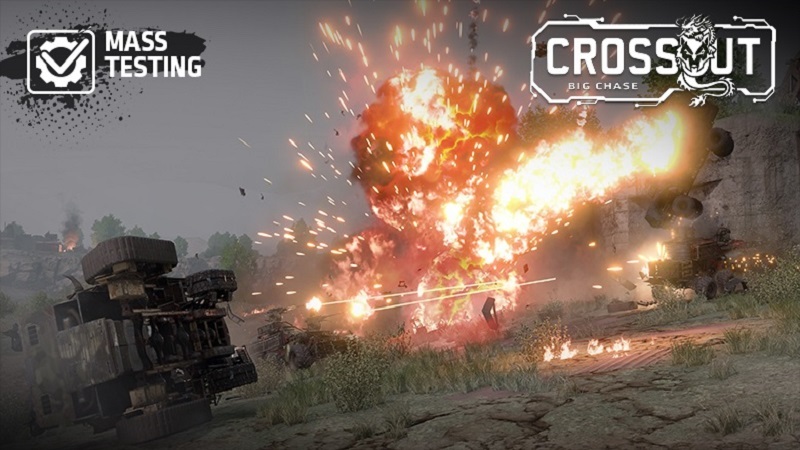
Hello, survivors!
Today and during the weekend, all of you will be able not only to try out the test version with audio-visual improvements, but also to evaluate how the game physics and handling of cars is going to change for different movement parts.
We remind you that all the new features described in this news are not final and may be changed before they are introduced into the game or may not make it into the game at all. You can familiarize yourself with all the planned changes in detail on the special test server!
A major audio-visual update should not only include improvements to graphics, effects, and sounds. It should give a new, more realistic feeling from driving your own armoured car, and the controls should correspond to what is happening on the screen.
Wheels
Why do we make these changes?
In the case of wheeled vehicles, we tried to achieve several goals at once. The first and simplest one was to make the handling of wheeled vehicles more interesting and versatile. The current “arcade” feeling may have its advantages, but in the realities of the new visuals it doesn’t fit with what the player sees in front of him.We have seriously refined the vehicle suspension behaviour, and the current simplistic wheel physics no longer meets the required standards.
In addition, we would like to increase the competitiveness of vehicles with standard and steering wheels compared to armoured vehicles that use only the “ST” wheels.
What has been done?
- We have reworked the traction of the wheels on all surfaces, and implemented high friction for terrain materials so that cars with low clearance will brake when they come into contact with them. For all objects that appear as vertical obstacles and so-called “invisible walls”, we implemented low friction and minor elasticity. This will prevent the car from “sticking” to the object after colliding with it.
- The turning speed of the wheels was reduced, and the dependence of their turning speed on the mass of the vehicle was increased.
- Vehicle suspension now tilts when the speed vector changes.
- The handbrake mechanics were also changed. Now using the handbrake will only block the rear wheels.
How will cars with standard wheels be different from the ones with the “ST” wheels?
Vehicles with standard wheels should have a better grip on the road and tend to skid less frequently. The handbrake must be actively used to position the vehicle and for sharp turns.Cars that only use steering wheels have a smaller turning radius, but tend to skid more often. The handbrake will be used occasionally to make sharp turns.
Comment:
New settings open up more possibilities for mounting different movement parts, as it’s not just the parts themselves that matter, but also their position on the vehicle.For example: the “first” 6-wheeled vehicle built on the basis of (in order) ST-standard-ST wheels in some situations will be very different from the “second” vehicle of the same kind built on the basis of ST-standard-ST wheels. There is also some effect of the center of mass: if it is shifted towards the steering wheels, the car will be more controllable.
As a result, if we look at the 2 cars from the example, it will be better for the first car to keep its center of mass in the middle and for the second car to move it forward towards the steering wheels.
Tracks
Why do we make these changes?
In addition to making the handling of tracked vehicles more interesting, we would also like to bring the tracks up to the level of other movement parts. At the moment, the tracks are considered to be one of the most controversial movement parts, especially compared to other chassis with more clear physics.What has been done?
- The turning speed of the tracked vehicles has been reduced.
- The dependence of the tracked vehicle’s turning speed on its mass has been increased.
- The turning radius of some tracks has been slightly changed.
- Fixed a bug due to which the car could abruptly change its direction after running into a bump or other obstacle.
Mechanical legs
Why do we make these changes?
First of all, we’d like to get rid of the old features that didn’t correspond to the in-game physics. These changes include vulnerability to pushing and difficulties when climbing slopes. We are also aiming to refine the acceleration and braking of the builds with mechanical legs, adding inertia and smoothness to their movements.
What has been done?
- Vehicles on mechanical legs have become more resistant to pushing.
- Now vehicles equipped with mechanical legs can climb steep slopes.
- The acceleration of the legs on different axes and the rate of turn around its axis are now independent of the current speed of the car. The legs used to be very slow when you started moving, but extremely fast if you started manoeuvring while moving. They now have roughly the same acceleration at any speed, making them similar to hovers.
- The speed penalties and other parameters responsible for the acceleration and inertia of the legs have been reconfigured. Now super-heavy builds on mechanical legs should be just as slow as those on wheels (but they can still turn around relatively quickly and push just about anything).
Augers and “Omni”
In order to improve these parts and correct the problems associated with their slow strafing, we plan to:- Add special perks for those parts:
- Omni: Reduces the rate of spread increase by 33% when firing or when turning the weapons. The bonus decreases proportionally with other mounted movement parts.
- Meat grinder: the damage of the augers increases with the increase of the vehicle’s mass. If the vehicle’s mass is less than 5000 kg, then the movement part deals base damage. The multiplier increases linearly up to 300% of the damage dealt at a vehicle’s mass of 15,000 kg.
- Omni: Reduces the rate of spread increase by 33% when firing or when turning the weapons. The bonus decreases proportionally with other mounted movement parts.
- Increase the strafe speed on these movement parts when the car is already going in a straight line.
Hovers
Why do we make these changes?
Hovers have long had a reputation for being rather “toxic” movement parts because of some features that enabled survivors to create the “sideways” builds or to instantly accelerate on lightweight vehicles. We would like to get rid of these features and make the movement part not so versatile.
Solving the problem with the “sideways” builds will also remove a barrier for newcomers who would like to play with hovers, but inevitably face the need to build a “sideways” build.
Our other objective is to improve the handling of the vehicles on hovers using a gamepad, which will be particularly important for console players.
What has been done?
- Refined the suspension and animation of hovers. Now the builds on hovers tend to tilt more from acceleration and speed.
- Stabilization of the car with hovers now depends on the shape of the “hover base”: the wider and longer it is, the more stable the build will be. The “hover base” is a rectangle that includes all the hovers mounted to the vehicle. The size of the hover base also determines how much the build leans when moving.
- We plan to increase the durability of hovers to compensate for the inability to use the “sideways” builds and the new stabilization.
- “Icarus IV” and “Icarus VII” are now more clearly divided into archetypes:
- Icarus IV — the basis for a “medium” build: this hover has higher tonnage, durability and stabilization, but lower acceleration and top speed.
- Icarus VII — the basis for a “lightweight” build: it has lower tonnage and durability, lower stabilization but higher acceleration and top speed.
- We understand that the new parameters are forcing some players to change their hovers in order to keep their vehicles effective. After the update, we will launch a special compensation system — each player will be able to exchange their “Icarus VII” hovers to “Icarus IV” and vice versa as many times as they have had parts on their account. During the exchange, the upgrade of the part you are exchanging will be retained.
- Icarus IV — the basis for a “medium” build: this hover has higher tonnage, durability and stabilization, but lower acceleration and top speed.
New vehicle controls for the movement parts with the strafing function
With this update, the controls of cars on movement parts with the strafing function will be changed (hovers, mechanical legs, augers, “Omni”). From now on, the driving direction of such cars will always correspond to the direction in which your camera is looking. You can turn the vehicle by rotating the camera, but you can also turn the vehicle using the special rotation keys, which will replace the strafe keys (the maximum turning angle by using those keys will be 45 degrees).
The strafe function will be moved to the turning keys. The forward/backward movement and strafe will work the same way as before. You will also be able to customize the key bindings to your liking in the settings.
In order to look around without turning the car itself, you can use the key responsible for blocking the rotation of the weapon barrels.
For your convenience, we have improved the key responsible for placing the car in the center. Its use in combat allows you to quickly move the camera in the opposite direction and force the weapon to turn in the same direction. It means that you can keep moving forward, while also looking back and shooting back.
We understand that such changes may feel unusual at first, but through inner tests, we have found that they ultimately add more dynamics and make the handling more comfortable once the player gets used to its features.
Anything else?
Breaker
You can also check out the new perk of the “Breaker” shotgun on the test server. Now, if the weapon doesn’t fire or gets overheated for 0.8 seconds, the next shot will have a significantly increased range, reduced spread and increased damage. The damage bonus depends on the number of radiators: the more of them there are, the higher the bonus.The previous perk of “Breaker” didn’t match the weapon’s archetype and, in some cases, felt useless or unfair (especially before “Omamori” appeared in the game). It didn’t work in every game situation, but when it did, it was too effective. The new perk is designed to solve these problems: it should be more versatile and won't depend as much on the opponent in a duel.
“Spark III”
- One-time power reduction reduced from 9% to 7.5%.
- The maximum negative effect is now 60% instead of 72%.
“Flash I”
- One-time power reduction and increase in reload time reduced from 6% to 5%.
- The maximum negative effect is now 60% instead of 72%.
How to get to the test server?
If you have already participated in testing on a special server, then it will be enough to start the Launcher from the folder with the test client and wait for the update to complete.
- Create a new folder for the game on your hard drive.
- Download the Launcher from this link. The file name should not contain numbers indicating that the file is a duplicate. Please note that you should launch the file that does not contain any digits (1), (2), etc. in its name. If, when starting the installed launcher, you get to the live game servers, you need to delete all downloaded launchers from the download folder and try again.
- Start the Launcher and install the game to the folder you created (for example: D:\Public test\Crossout).
- After the installation is complete, start the Launcher and enter the game with your username and password.
- The whole progress of your main account will be transferred to the main server (including parts in storage and levels of reputation in factions).
- After logging into the server, to transfer progress from your account, press the “Esc” key and select “Copy account data”.
- Please note the schedule of the test server:
- Friday, October 14, 2022 from 13:00 to 19:00 (GMT time)
- Saturday, October 15, 2022 from 13:00 to 19:00 (GMT time)
- Sunday, October 16, 2022 from 13:00 to 19:00 (GMT time)
- Friday, October 14, 2022 from 13:00 to 19:00 (GMT time)
- Any progress you make on the test server will not be transferred to the live game servers (INCLUDING ATTEMPTS TO BUY PACKS).
The public test server is intended only for testing of the upcoming update, and may not accommodate all players without exception. However, absolutely anyone can join the server, as long as there are free spots.
For more information on Crossout, follow these channels:




